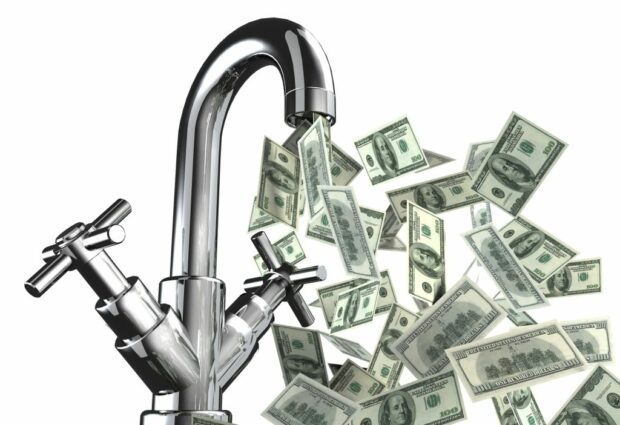I know water is a fundamental part of our lives, but how much does it cost you?
Sit down and think about it, and then multiply whatever your average monthly water bill is by 12.
Now, what is the number like?
If I’m to take a guess, I’m sure you just said, “WOW!”
Water eats deep into our paychecks. But due to the fact that its bills (on a per month basis) aren’t always jaw-dropping, we seldom notice its effects.
Now that you can see its effects on your paycheck all year round, I’m sure you’re eager to know if there’s a way you can hack your water bills.
And the answer is: YES, there is.
In this guide, we’re going to share with you some plumbing tips you can use to that effect.

Fix all forms of water wastage
The easiest way to cut your monthly water bill is to remove any form of water wastage.
Take note that water wastage can come in the form of leaking pipes, drips from a water heater, ceaselessly running taps, and unexplained drips in and around other water sources in the house.
By calling in a Fortitude Valley plumbing service expert to inspect and fix all possible causes of water wastage, you’d be saving yourself a lot of money come the end of every month.
Install low flow toilets
Another way to reduce your water consumption is to change how you flush your toilet, as well as how you bathe in the shower.
By calling in a plumber to help you install a low flow toilet in your home, you can save as much as 5.4 gallons of water per flush. A low-flow toilet uses about 1.6 gallons per flush versus the seven gallons per flush of a standard toilet.
Now imagine if you have two to three low flow toilets in your house, as against someone with a similar number of standard toilets, how much water (and invariably cost) do you think you’ll save per month?
Install low flow showerheads
As far as showerheads go, you can reduce how much water you use in your house by switching from standard showerhead models to WaterSense models.
WaterSense showerheads can save the average homeowner more than 2,700 gallons of water per year, which is equal to the amount of water needed to wash 88 loads of laundry.
Replace the Aerator on your Faucets
Did you know that you can reduce how much water you use in your house, and ultimately your water utility cost by simply calling in a plumber to replace the aerator of all the faucets in your house?
Yes, you read that correctly!
Aerators are simple inserts that fit inside the faucet little chrome cap. More like a net, these little caps are what determines the volume of water that exits from a faucet. Without them, water just gushes out of a faucet uncontrollably.
Unfortunately, over time, some faucets lose their aerators. When this happens, homeowners begin to use more water than they ought to.
You can resolve this issue by calling a plumber to inspect all the faucets in the house and replace appropriately any missing aerator.
Upgrade your Washer and Dishwasher
Upgrading your appliances might seem counterintuitive, but it actually might save you more money in the long run. Older washers are not as efficient as new washers and dishwashers are designed to be. Washing your laundry actually accounts for 16% of your total water usage. Updating and using a more efficient WaterSense washer requires 33% less water than older models of appliances, which translates to a lower monthly water bill. Make sure you check out these tips for choosing the most energy and water-efficient top load washers to help lower your water bill.
Washing your dishes in an EnergyStar dishwasher, for instance, only uses an average of 4 to 6 gallons of water, whereas handwashing typically uses up to 20 gallons of water to wash the same amount of dishes.
Upgrade to a tankless water heater
Water heaters are quite important in every home. But the traditional ones that most of us use is one of the reasons why our monthly water bill is always on the up.
Typically, traditional water heaters store water in a tank, regardless of whether you need hot water or not, leading to wastage and higher water consumption.
A more conservative alternative is tankless water heaters, which according to Energy.gov will save homeowners over $100 annually the longer they remain in service.



